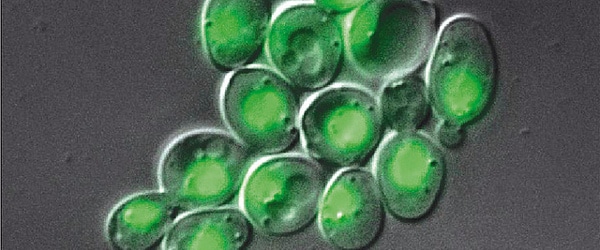Don’t be left in the dark!
Navigating through the sea of parameters that can aid or abet successful microscopy can perhaps seem daunting. It may be tempting to assume you can just sit down at a microscope, look at your sample, and obtain beautiful images simply by hoping for the best. However, even a basic understanding of the factors that can affect image acquisition, will mean the difference between clear, informative imaging performed efficiently and low-quality, fuzzy imaging performed by trial and error. After all, you don’t want to be stuck in a dark microscope room any longer than necessary! And you certainly don’t want to waste, damage, or lose samples due to inadequate microscopy skills, especially when you can take just a few minutes to learn the basics.
Phew, no physics
In upcoming articles, we will discuss some of the most basic imaging parameters that should be considered in microscopy. You won’t need a physics degree or even microscopy or imaging experience to be able to learn these fundamental concepts. You will be able to acquire enough of a working knowledge to be able to troubleshoot effectively and increase your success at obtaining publication-quality images that allow you to draw the conclusions for which you designed your experiments.
We will briefly introduce the topics and concepts below and each will be covered in more depth in forthcoming articles;
Resolution: this is the ability to distinguish between two (or more) objects that are very close together in space. For instance, if two structures are 100 nm apart in a cell, but your microscope has a resolution of 200 nm, then those two structures will appear as a single structure when viewed under the microscope. Resolution in digital imaging can also refer to the number and quality of the pixels each digital image has- the greater number of pixels in a given space, the greater the resolution.
Enjoying this article? Get hard-won lab wisdom like this delivered to your inbox 3x a week.

Join over 65,000 fellow researchers saving time, reducing stress, and seeing their experiments succeed. Unsubscribe anytime.
Next issue goes out tomorrow; don’t miss it.
Contrast: the difference in the intensity of the signal from the sample compared to the average signal intensity of the entire image. Like resolution, the concept of contrast has implications in the ability to distinguish between different structures.
Dynamic range: in general, the difference between the largest (greatest) or smallest value for a variable. In the case of imaging, this relates to the difference between the most intense signal (presumably from the sample) and the lowest intensity signal (from the background).
Signal-to-noise ratio: this is a general estimate of image quality. This concept refers to the relative strength of the desired signal from the sample (the ‘signal’) compared to the undesired background signal from electronic or procedural artifacts (the ‘noise’). The difference between these two has to be great enough (i.e., the ratio has to be high enough) to accurately distinguish between the sample and the background. This is also related to the concepts of contrast, resolution, and dynamic range.
Brightness: In digital imaging, this concept describes the intensity of all the pixels in a digital image (as opposed to the “brightness” of a sample, for example).
Numerical aperture: the range of angles over which a microscope can detect light. This is a function of the distance between the point being detected and the lens of the microscope as well as the medium used for detection (air, oil, or water).
We will expand on each of these topics and concepts in the coming weeks, so don’t worry if you are still (metaphorically) in the dark!
You made it to the end—nice work! If you’re the kind of scientist who likes figuring things out without wasting half a day on trial and error, you’ll love our newsletter. Get 3 quick reads a week, packed with hard-won lab wisdom. Join FREE here.








